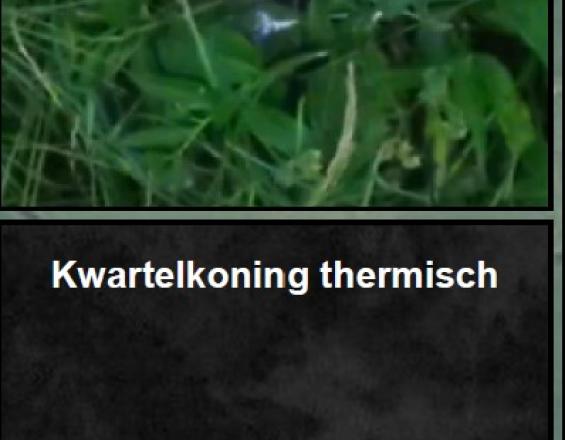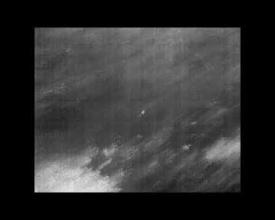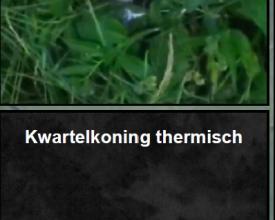
Use of drone to locate Corncrake (Crex crex)

The 'Langenholte' reserve is located in the floodplains of the River Vecht (Zwolle). An important feature of the site is the presence of Corncrake. The key factor in determining suitable breeding habitat is the vegetation structure, which should provide enough cover for the birds from April onwards. Another important feature of the site is Snake's Head Fritillary (Fritillaria meleagris), a lowland hay meadows (H6510) species.
Management objective for the area is to create optimal conditions for the survival of Corncrake and for keeping the meadow in a good conservation status. However, combining these two objectives appears to be difficult in practice because of conflicting requirements. To gain more knowledge about the Corncrake's habits and thus to take more targeted measures, we experimented with using a thermal camera mounted on a drone. The drone with the thermal camara was successfully used to locate the Corncrake. Based on this, it was possible to apply more targeted measures to protect the nests.
Impacts
In addition to being able to locate the Corncrake better, the use of the drone also ensures less disruption. The drone flies at a high altitude and can be controlled from distance. The images from the drone are of good quality and the Corncrake was clearly recognizable in the images.
The use of the drone is also positive for the farmer who manages the grassland. If the farmer is only allowed to mow the grass once a year, the quality of this grass is less than if he is allowed to mow it twice. If areas to be set aside from mowing to protect corncrakes can be designated more precisely, the farmer will benefit by being able to mow a larger area. This also provides more support for the protection of the Corncrake.
There are still some problems to use the drone in the annual management:
- The thermal camera only works if the vegetation has not warmed up. Therefore, you have to fly before sunrise
- Not everyone can fly such a drone
- The cost for the drone and thermal camera is relatively high
Due to technical developments in the field of drones, these concerns are likely to diminish in the future. Despite its current limitations, it is a valuable technique for studying the behavior of Corncrake and to learn more about the habitat and management requirements of this bird species.
More information about protected area management via https://mpg.eurosite.org/.

